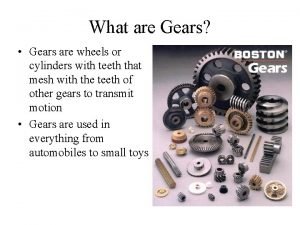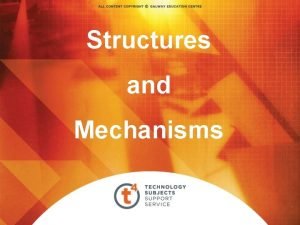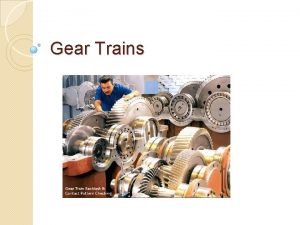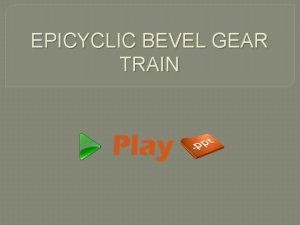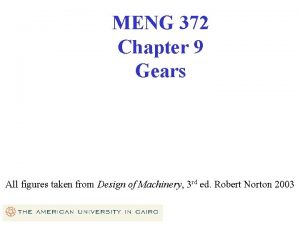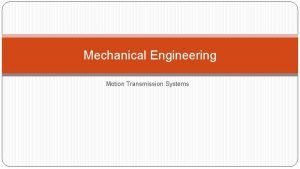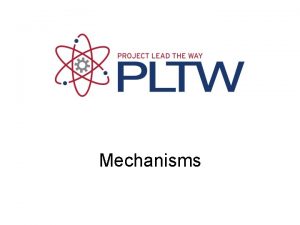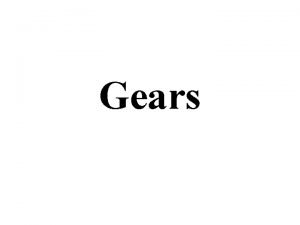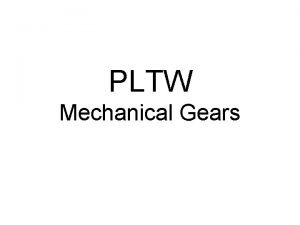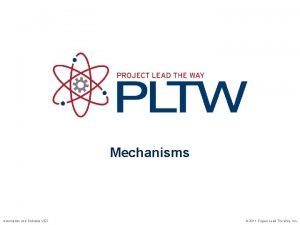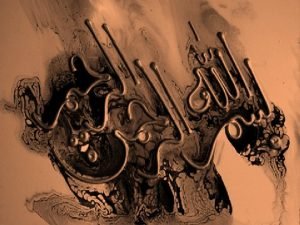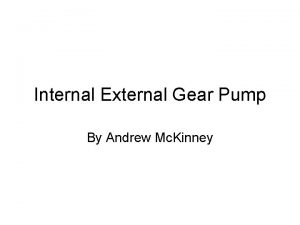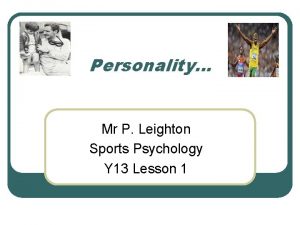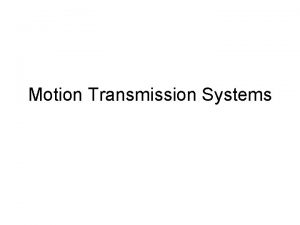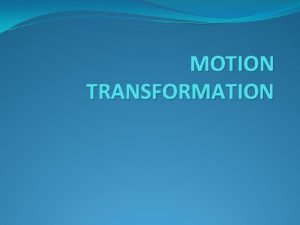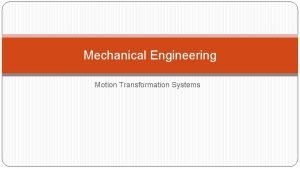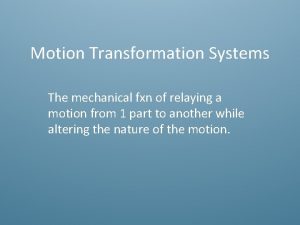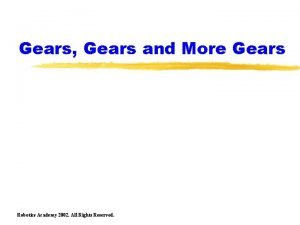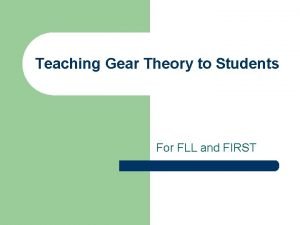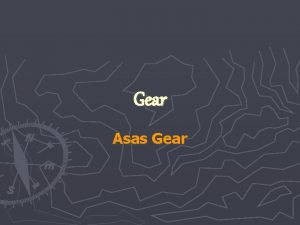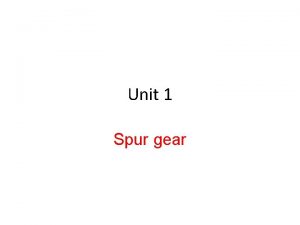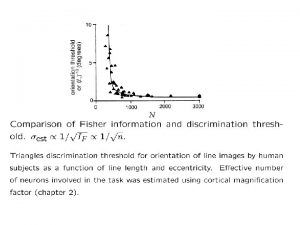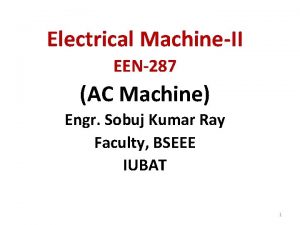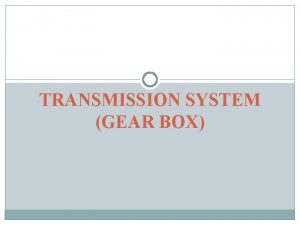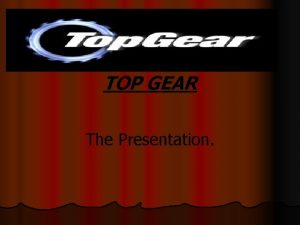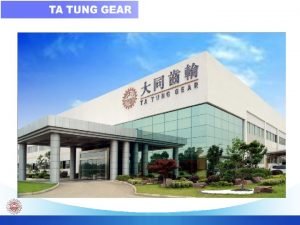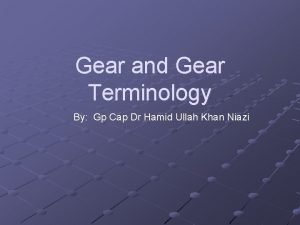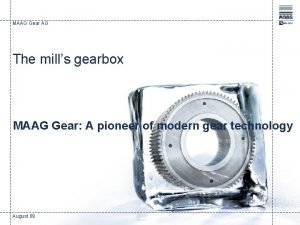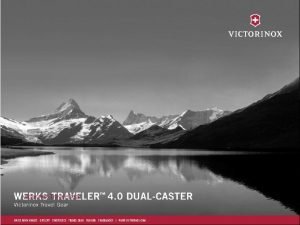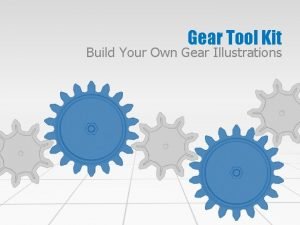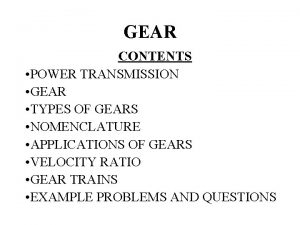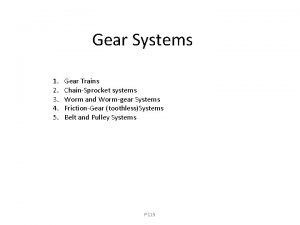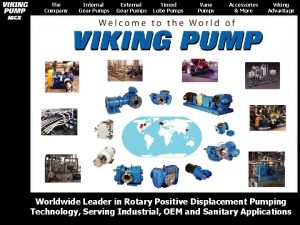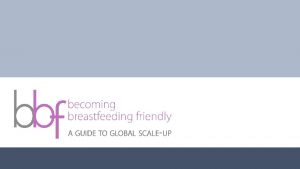Theory of MachineII Type of Gear Gear Train






















- Slides: 22

Theory of Machine-II • Type of Gear • Gear Train Presented By Prof. s. s. sarode

Gears 1. 2. 3. 4. What we need to Know about them. Type of gears Terminologies or nomenclatures Forces transmitted Design of a gear box

Type of Gears • • Spurs Helical Bevel And Worm Gears

Spur Gears Are used in transmitting torque between parallel shafts

Helical Gears Are used in transmitting torques between parallel or non parallel shafts, they are not as noisy as spur gears

Fig. 13. 2

Bevel Gears • Are used to transmit rotary motion between intersecting shafts Teeth are formed on conical surfaces, the teeth could be straight or spiral.

Worm Gears Are used for transmitting motion between non parallel and non transmitting shafts, Depending on the number of teeth engaged called single or double. Worm gear mostly used when speed ratio is quiet high, 3 or more

Nomenclature Smaller Gear is Pinion and Larger one is the gear In most application the pinion is the driver, This reduces speed but it increases torque.

Internal Spur Gear System

pitch circle, theoretical circle upon which all calculation is based p, Circular pitch, p the distance from one teeth to the next, along the pitch circle. p=πd/N m, module=d/N pitch circle/number of teeth p= πm P, Diametral Pitch P=N/d p. P= π

Angle Φ has the values of 20 or 25 degrees. Angle 14. 5 have been also used. Gear profile is constructed from the base circle. Then additional clearance are given.

How Gear Profile is constructed A 1 B 1=A 1 A 0, A 2 B 2=2 A 1 A 0 , etc

Standard Gear Teeth Item 20 o full depth 20 o Stub 25 o full depth Addendum a 1/P 0. 8/P 1/P Dedendum 1. 25/P Clearance f 0. 25/P Working depth 2/P 1. 6/P 2/P Whole depth 2. 25/P 1. 8/P 2. 25/P Tooth thickness 1. 571/P Face width 9/P<b<13/P

Gear Trains

Planetary Gear train You can get high torque ratio in a smaller space There are two inputs to the planetary gears, RPM of sun and Ring, The out put is the speed of the arm.

Example of planetary Gear train Gear 1, sun , RPM 1200, Number of teeth 20, Planet Gear , Number of teeth 30 Ring Gear, Rotates RPM 120, and teeth of 80, ¼ horse power, find the speed of the arm and torque on the ring. Alternatively you may have Certain Out put Torque requirements

Transmitted Load • With a pair of gears or gear sets, Power is transmitted by the force developed between contacting Teeth

d in, RPM rev. /min, V in/sec d in, n rpm, V fpm Toque lb-in V fpm T= N. m, V m/s, F Newton These forces have to be corrected for dynamic effects , we discuss later, considering AGMA factors

Example: A conveyor drive involving heavy-shock torsional loading is operated by an electric motor, the speed ratio is 1: 2 and the pinion has Diameteral pitch P=10 in -1, and number of teeth N=18 and face width of b=1. 5 in. The gear has Brinnel hardness of 300 Bhn. Find the maximum horspower that can be transmitted, using AGMA formula.

Gear Box Design

Thank you
 Whats a gear train
Whats a gear train Vex simple gear train with idler
Vex simple gear train with idler Types of gear trains
Types of gear trains Vex simple gear train with idler
Vex simple gear train with idler Epicyclic bevel gear train
Epicyclic bevel gear train Gear train ratio
Gear train ratio Whats a gear train
Whats a gear train Simple gear train with idler examples
Simple gear train with idler examples Gear means
Gear means Pltw simple gear train
Pltw simple gear train Vex mechanisms
Vex mechanisms Epicyclic gear train tabular method
Epicyclic gear train tabular method Internal vs external gear pump
Internal vs external gear pump Mr. p
Mr. p Uniquisitive
Uniquisitive Types of motion transmission
Types of motion transmission Motion transmission and transformation systems
Motion transmission and transformation systems Definition of mechanical system
Definition of mechanical system Shaping with rack cutter
Shaping with rack cutter Screw gear system type 1
Screw gear system type 1 Gear type
Gear type What is gear
What is gear Gear theory
Gear theory
